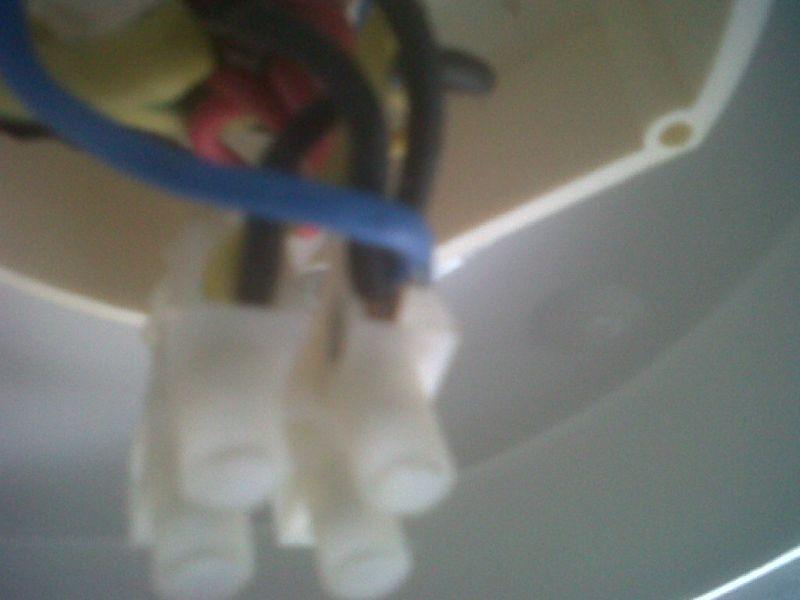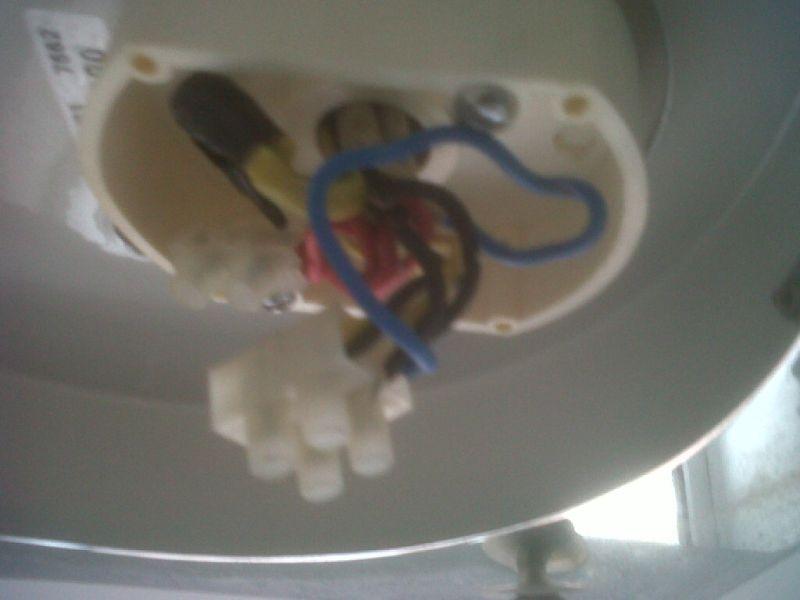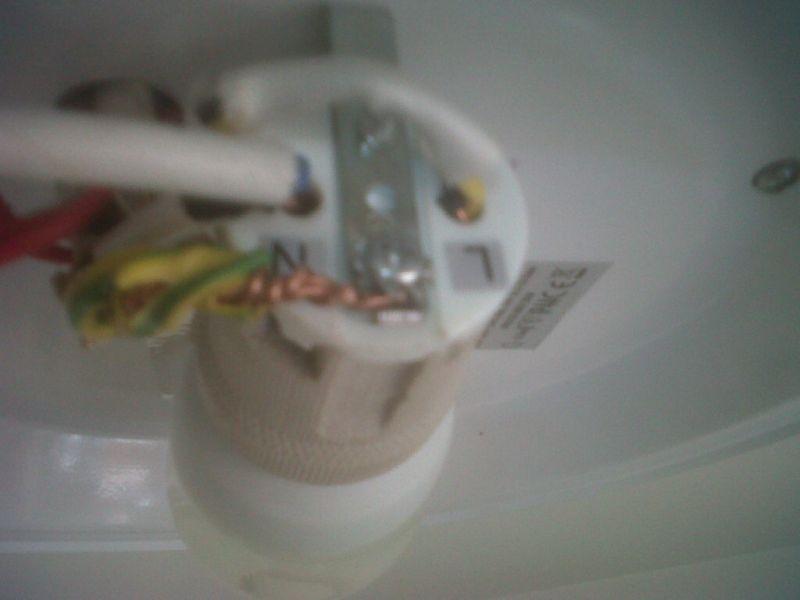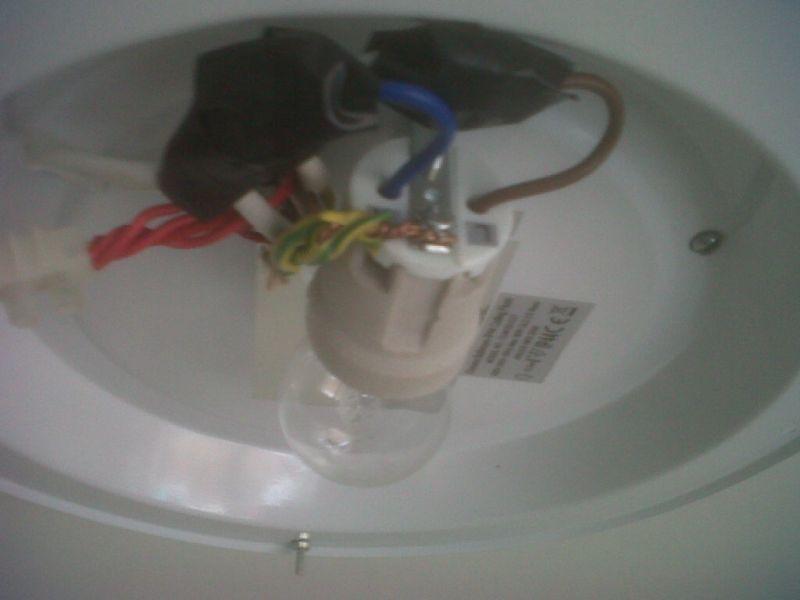Hi
My bathroom light stopped working, I have replaced the bulb with no improvement. The old unit is no longer in supply so I will have to buy a new light fitting. I have put in light fittings before but am somewhat confused by the wiring coming out the ceiling I have looked at the Wiki but am still confused.
I have looked at the Wiki but am still confused.
So there are three cables:
Cable 1 has a 1 black, 1 yellow-green and 1 red wire coming out.
Cable 2 has 1 black, 1 yellow-green, 1 red and 1 blue wire coming out
Cable 3 has 2 reds and 1 black coming out.
There is a single yellow wire coming out of the ceiling hole but which is not coming out of any cable.
All four reds are bonded together in a seperate connector.
The 2 yellow-green wires are bonded together with electrical tape.
Black from Cable 1 is bonded with yellow one half of another connector
Black from Cable 2 and Black from Cable 3 are with blue in other half of same connector. This connector was wired to the old light fitting although I forgot to note which way round the neutral and live wire from the old light fitting went in.
I have not bought the new light fitting yet but assume it will have seperate earth, neutral and live connectors. I assume that I put the green-yellow in the earth connectors but am unclear about the neutral and live configuration?
I am attaching photos. Apologies for quality. Hope you can help
My bathroom light stopped working, I have replaced the bulb with no improvement. The old unit is no longer in supply so I will have to buy a new light fitting. I have put in light fittings before but am somewhat confused by the wiring coming out the ceiling
So there are three cables:
Cable 1 has a 1 black, 1 yellow-green and 1 red wire coming out.
Cable 2 has 1 black, 1 yellow-green, 1 red and 1 blue wire coming out
Cable 3 has 2 reds and 1 black coming out.
There is a single yellow wire coming out of the ceiling hole but which is not coming out of any cable.
All four reds are bonded together in a seperate connector.
The 2 yellow-green wires are bonded together with electrical tape.
Black from Cable 1 is bonded with yellow one half of another connector
Black from Cable 2 and Black from Cable 3 are with blue in other half of same connector. This connector was wired to the old light fitting although I forgot to note which way round the neutral and live wire from the old light fitting went in.
I have not bought the new light fitting yet but assume it will have seperate earth, neutral and live connectors. I assume that I put the green-yellow in the earth connectors but am unclear about the neutral and live configuration?
I am attaching photos. Apologies for quality. Hope you can help







